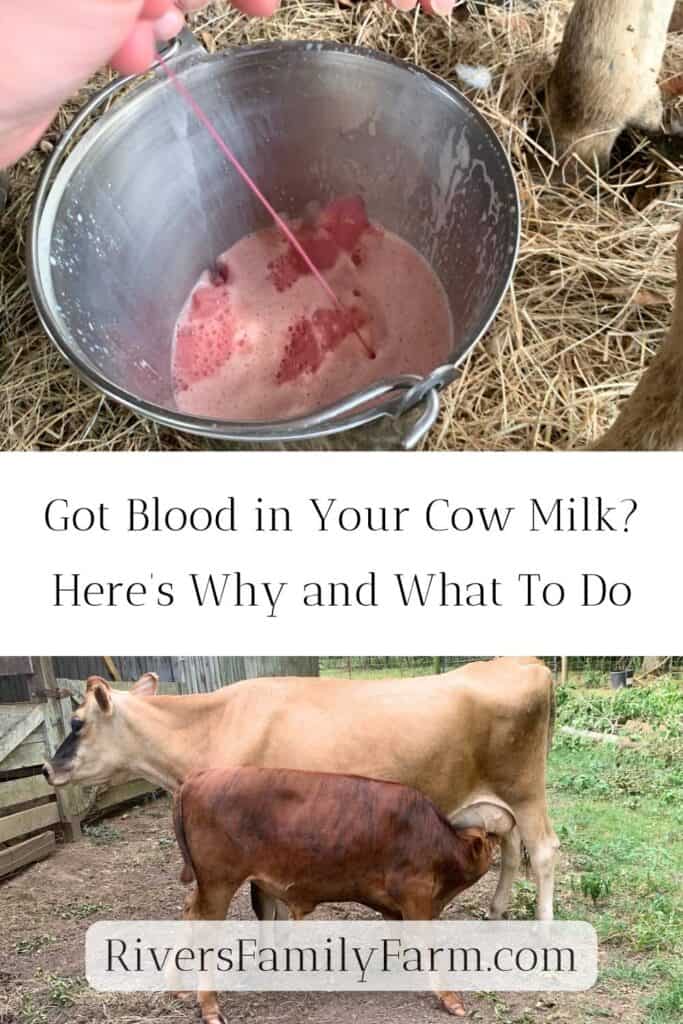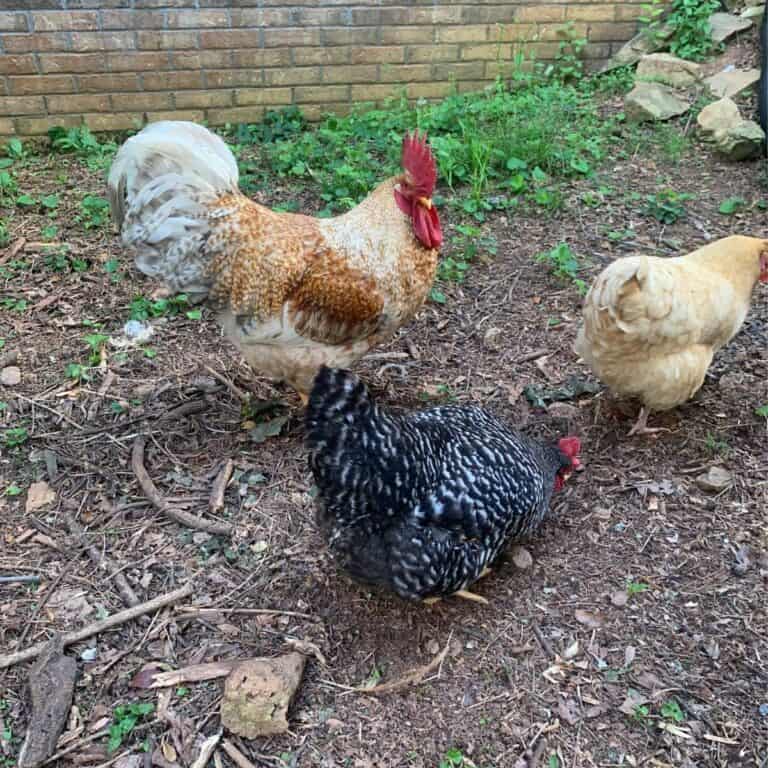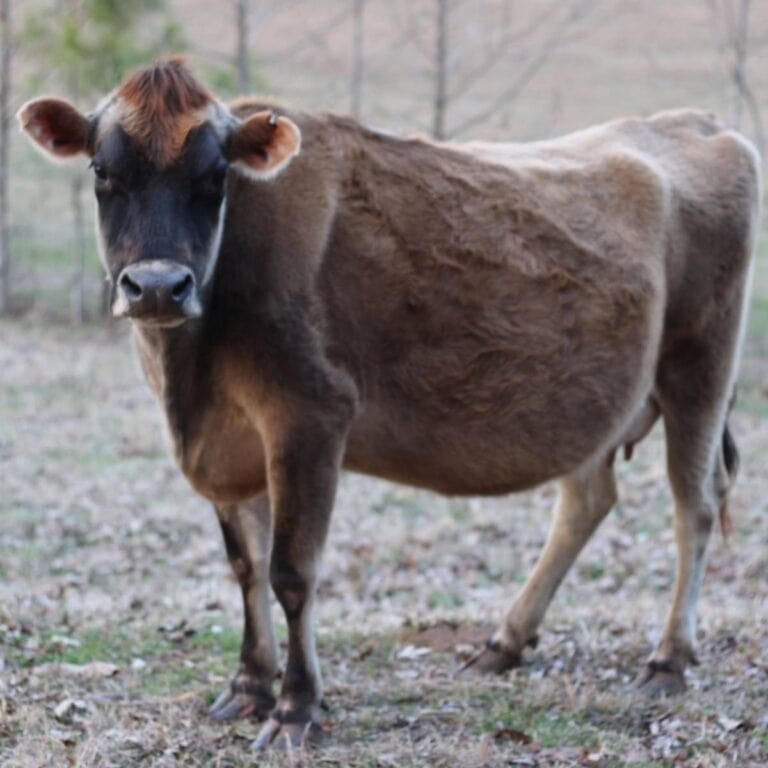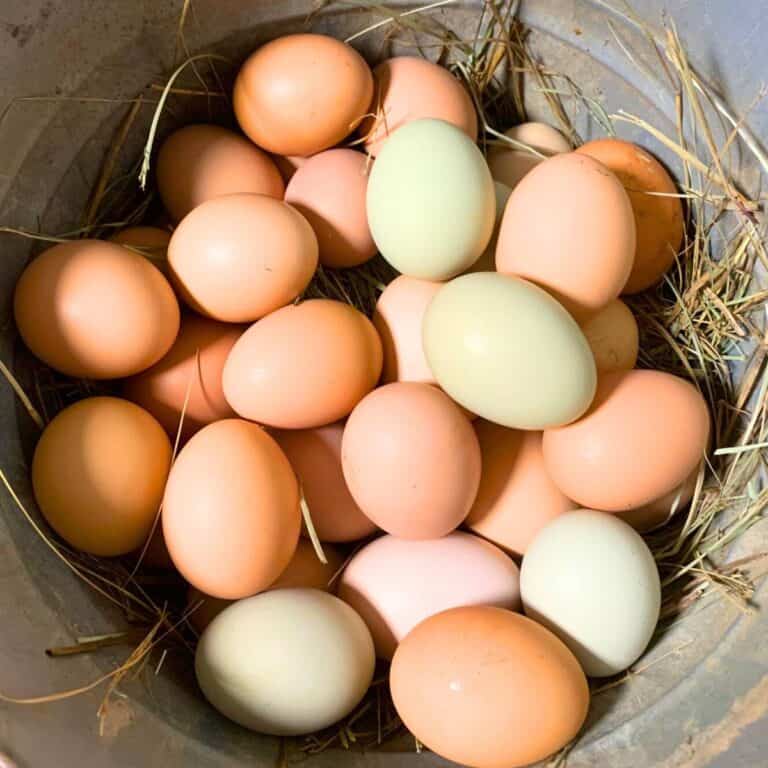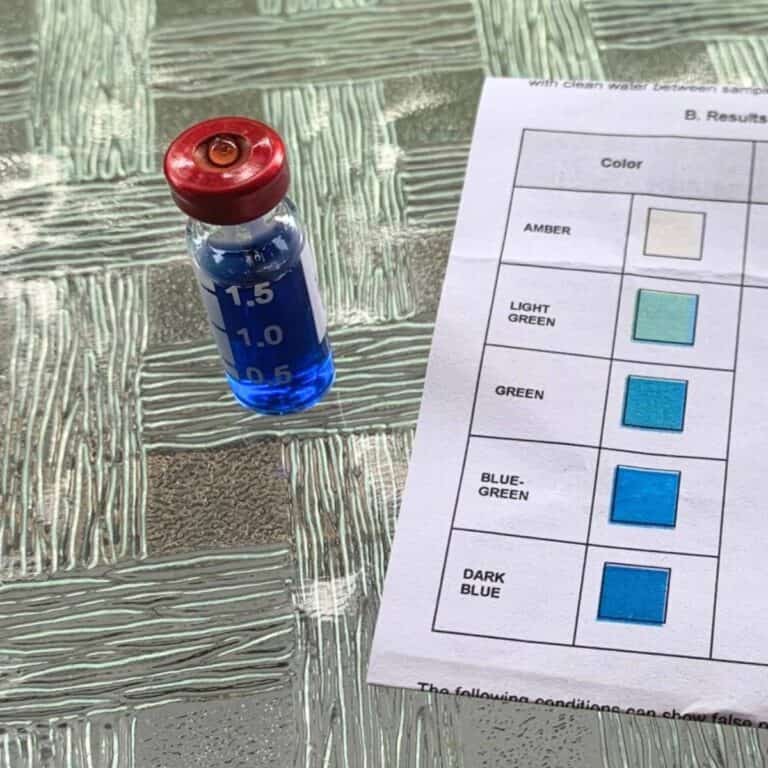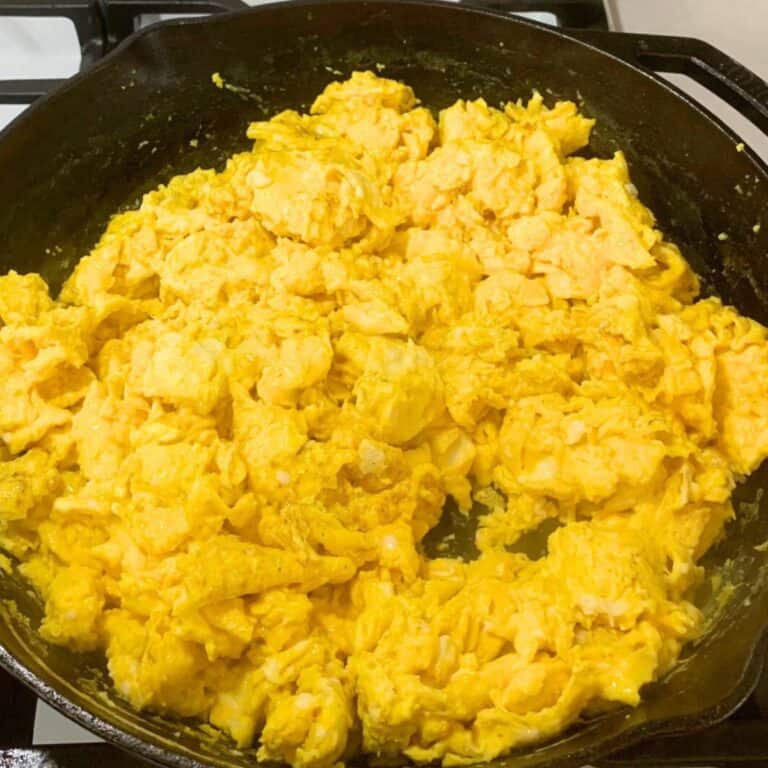Got blood in your cow milk? Why and what to do about it.
Do you see pink or red when you’re milking your cow? I’m going to share our experience on why this happens and what to do about it!
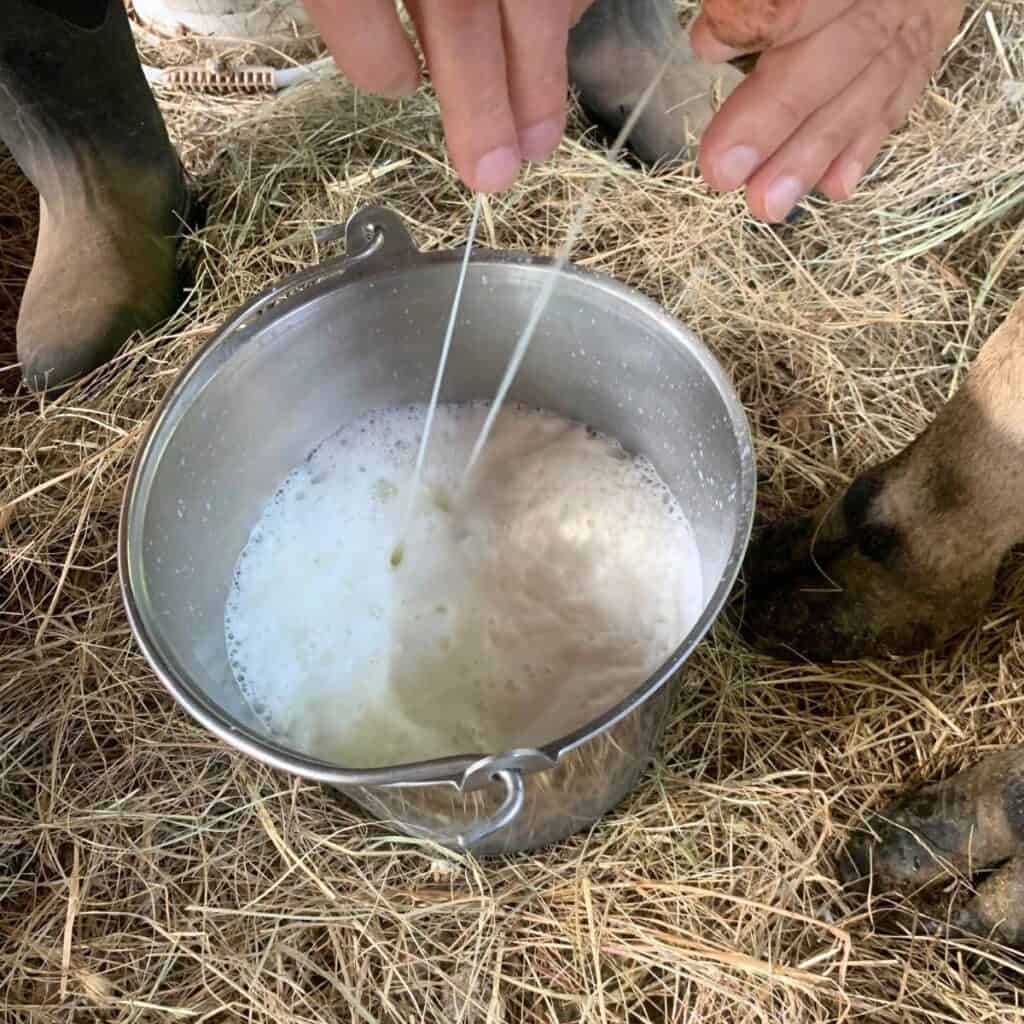
There are a lot of surprises when you start a farm or homestead. One of the biggest surprises to us happened right after our Jersey dairy cow Belle calved for the second time.
Why is there blood in cow milk?
Hemolactia (blood in milk) is common after calving when small blood vessels in the mammary glands rupture. In short, it’s normal for the cow’s udder to grow so large so fast that the blood vessels break after they have their baby.
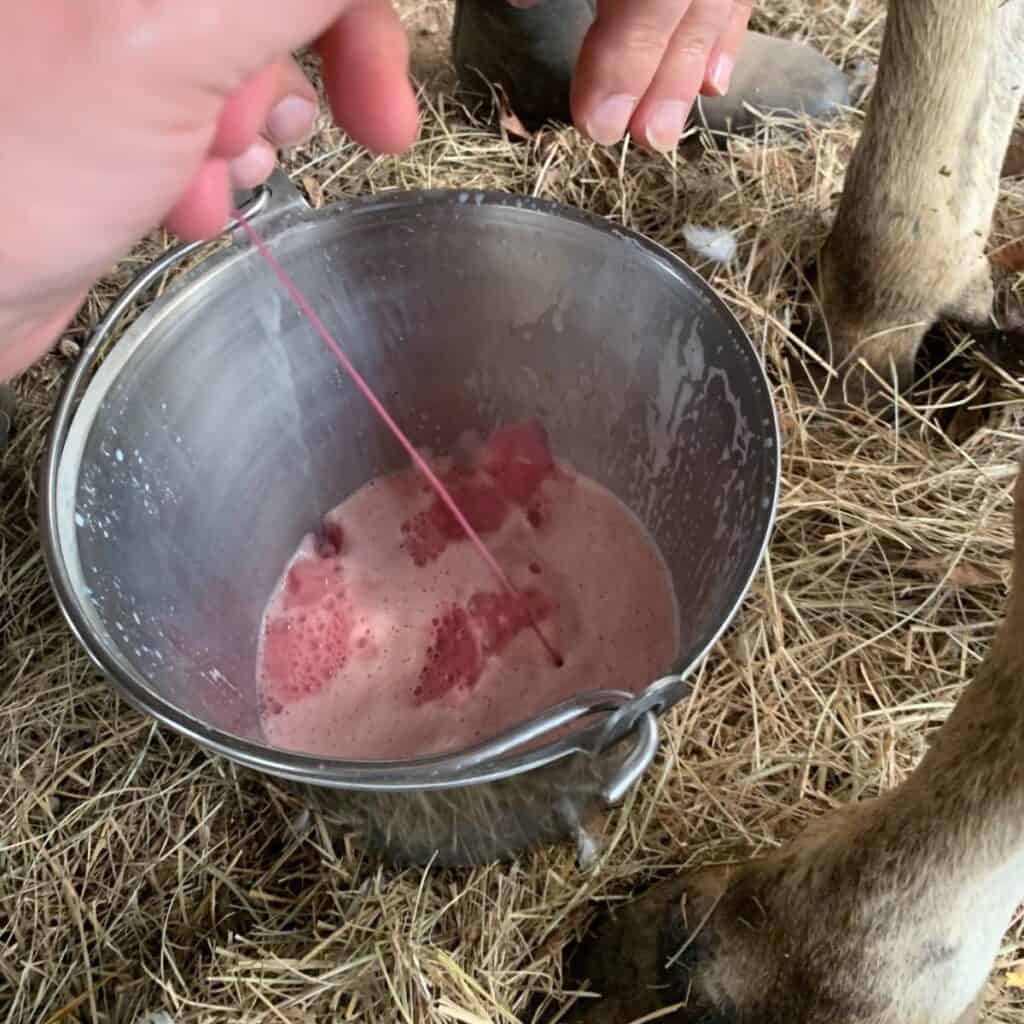
If your cow did not just have a baby, she may have an injury to her udder. It’s also possible for some infections like mastitis to produce a red stream of milk in your milk bucket. But I don’t want you to worry just yet.
I’ll explain more of the details and our experiences.
A cow may not have bloody milk with her first calf but may with her second.
When our dairy cow had her first baby, everything was fine. We milked her successfully and never had any issues.
Granted, if you read my post on how much milk a Jersey cow produces, you will see that there wasn’t a huge volume of milk with Belle’s first baby compared with how large her udder got with her second calf.
To summarize, Belle produced just one quart of colostrum the day after calving her first calf. In contrast, she produced one gallon of colostrum the day after calving her second calf. That’s a huge expansion in a short time!
After she calved the second time, we were caught off guard when pink streams of milk mixed with blood came out.
What to do if there’s blood in your cow milk.
First, don’t panic. The condition will usually clear up in a few weeks as long as you follow my advice.
Remember that it’s normal with a second calf and future calves for your cow’s udder to fill up rapidly with milk and for that stretching to break some blood vessels.
This post contains affiliate links, which means I make a small commission at no extra cost to you. Read my full disclosure here. Thanks for your support!
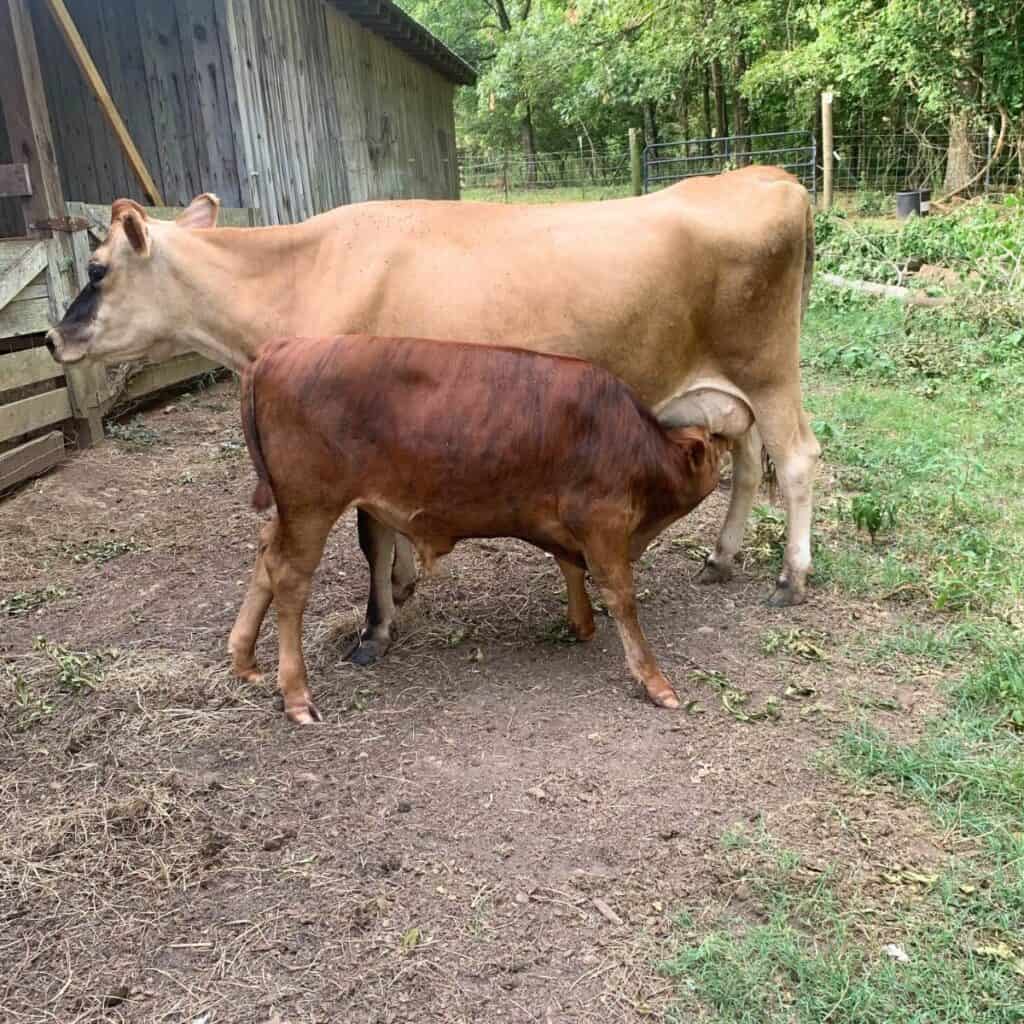
Stop feeding your cow grains.
If there is blood in your cow milk, you don’t need to exaggerate the problem by encouraging high milk production.
If you have been giving your cow grains to increase her milk production, put a pause on that until she heals. Grains like corn, barley, oats, wheat, or rye increase milk production in dairy cows.
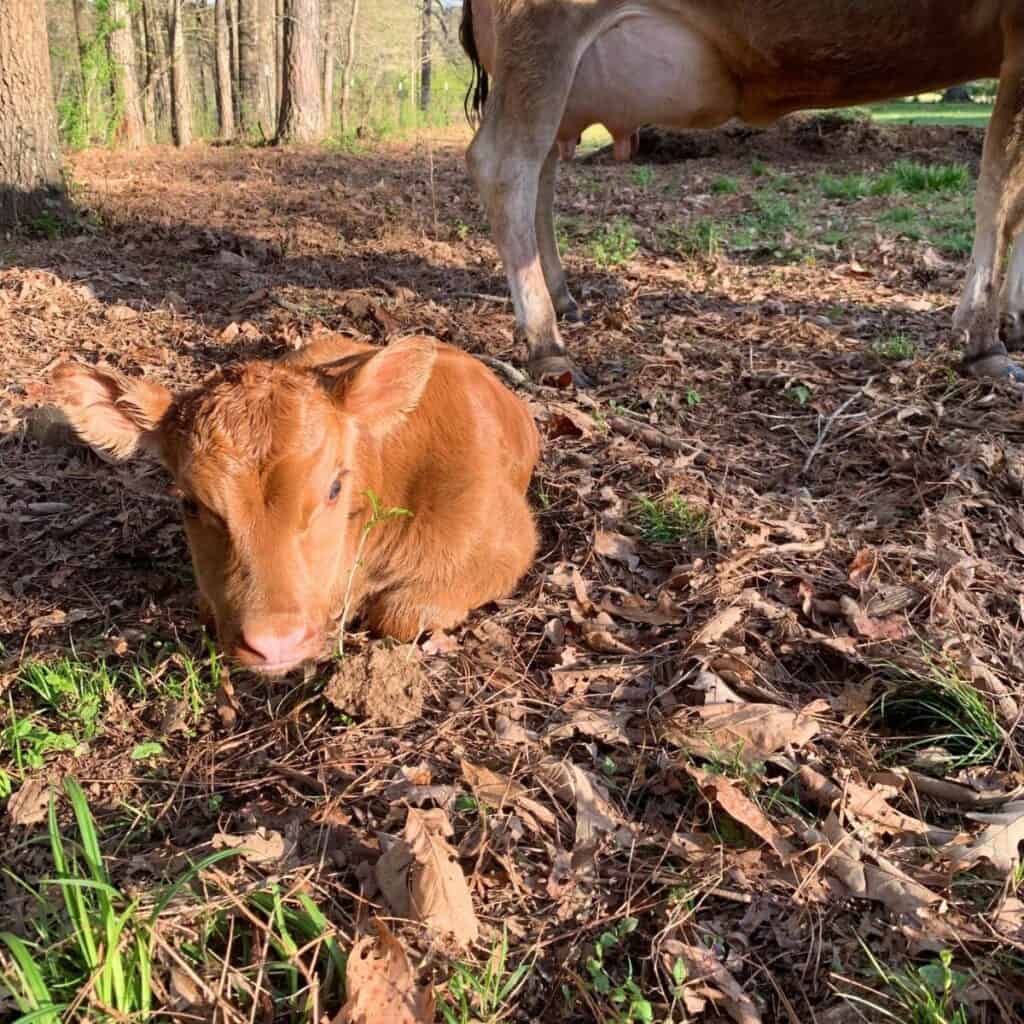
Let the calf nurse on her on demand until her udder heals.
The best thing you can do if there is blood in your cow milk as a result of having a new calf and the udder filling up rapidly is to keep the calf with your cow to nurse on demand. Did you know that saliva has beneficial, healing enzymes?
The blood in the milk is not a health concern for the new calf. There is no problem for a calf to nurse on its mom when she has bloody colostrum and bloody milk.
Even if your cow has blood in her colostrum or milk as a result of mastitis or other infection, a calf nursing on demand is still the best remedy.
Milk out your newly freshened cow at the end of each day.
It’s important to milk out your cow at the end of the day so that you get any leftover milk or colostrum out of her udder. Milk out her extra milk that the calf doesn’t get each day until her condition heals or until the calf drinks all the milk.
If you leave your cow engorged with milk, it will make the problem worse potentially. That’s because you run the risk of allowing mastitis or another infection to possibly set in.
This is true even when you’re drying off your cow later. You have to dry her off incrementally by milking her twice a day, then working your way down to once per day, and then stretching out the hours until eventually you stop milking her altogether.
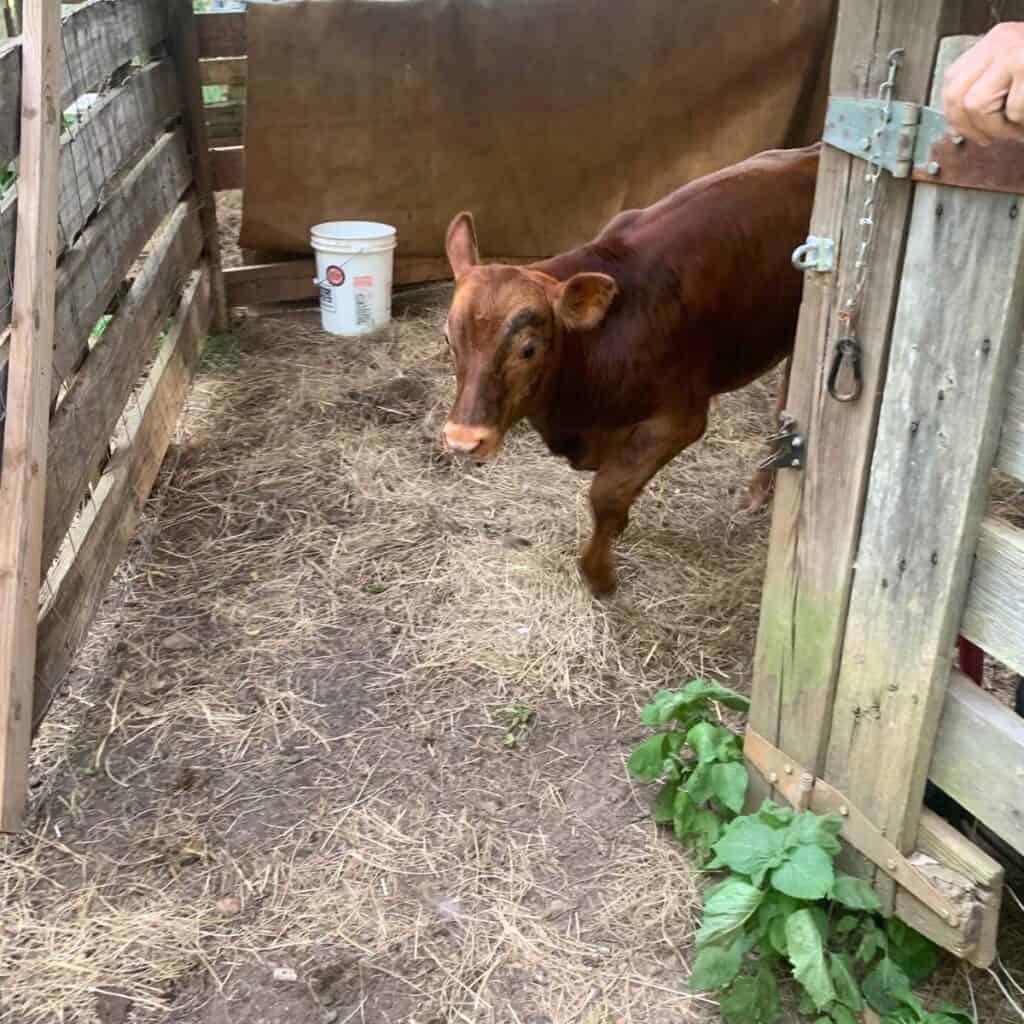
What to do if there’s blood in your cow milk from an injury.
If you see that your cow’s udder has an injury, you need to be cautious.
Do your best to apply first aid if the injury is on her teat or udder. If she has a calf, make sure that any topical remedies are safe for a nursing calf to ingest.
I make my own organic udder balm by melting and mixing beeswax, cocoa butter, Shea butter, and coconut oil, and then adding a few drops of healing essential oils like tea tree and lavender to the mixture. Allow it to cool and harden at room temperature, and then you can use it for almost any external skin condition.
If the injury is not too bad where she still lets her calf nurse, nursing on demand is the best medicine.
Now if the injury on her teat or udder is so bad that she won’t let her calf nurse on her or if she doesn’t have a calf, you will have to milk her out by hand gently or with a milk machine.
If you let your cow become engorged with milk, she will not only have discomfort but may also develop an udder infection. Also, her injury may not heal as quickly if she is left engorged with milk.
What to do if there’s blood in your cow milk from an infection.
You can buy home mastitis tests that can tell if your cow has mastitis or not. Preventing mastitis in the first place by being careful with your cow is the best option, though.
If your cow has mastitis, doing all the above steps like pausing feeding her grains, letting her calf nurse on demand, milking her out at the end of each day, and applying topical remedies can help alleviate her discomfort and encourage healing in her udder.
A common myth is that you have to take your cow’s calf away from her so it doesn’t spread mastitis to the other quarters. I have never actually met anyone where that was their experience, though. Ranchers and farmers who raise livestock near me always leave the calf on their mother and they never have mastitis spread from one quarter to the other three.
In fact, we took care of a Jersey dairy cow that had a history of mastitis in one of her quarters. After she had her calf and freshened with milk, it was clear that the mastitis either came back or she never got rid of it when she was dry.
We left her calf on her. Her calf did a better job of milking out her infected quarter than we could ever do. We even tried an over-the-counter mastitis treatment injection that our county co-op had. But alas, it did nothing to clear up her mastitis even though we tried it twice.
If your cow’s mastitis doesn’t get better or if it starts to get worse, you should call your local large animal veterinarian for help. There are some medicines that you can inject into the infected teat. But here is your warning. The injection is very painful for the cow and she will try to kick you.
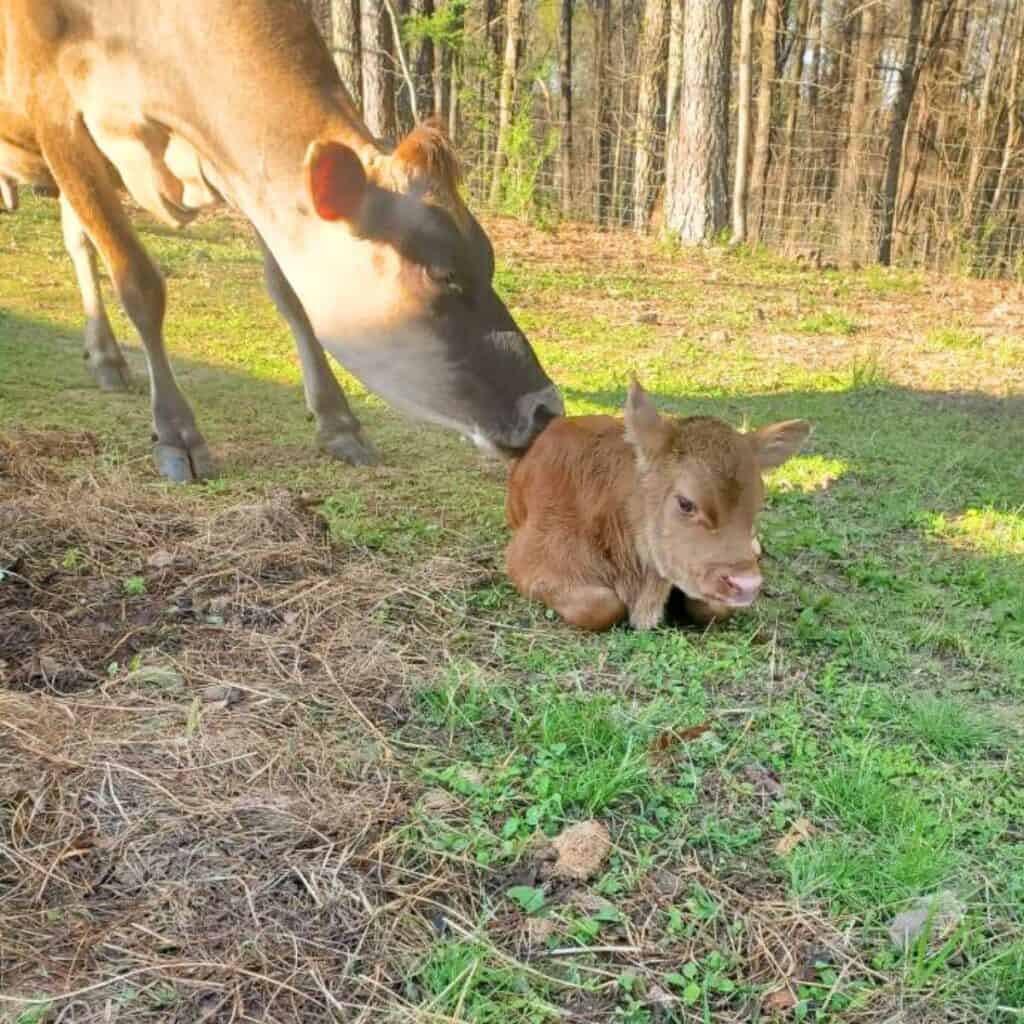
Bloody milk can be safe for animal and pet consumption.
While there are tribes that drink bloody milk on purpose, it’s for their survival. It’s probably not something that you want to do if you have other options.
The Masai people of Kenya and Tanzania harvest blood from cattle or camels. They do this by piercing the neck and taking a pint or so of blood before they stop and allow the animal to heal. The blood is then mixed with the milk so that there is enough for the people to drink since water is scarce.
You can give your red milk or pink milk to your other farm animals and it will be perfectly fine, though. As long as your cow is healthy and doesn’t have any blood-borne diseases, her bloody milk won’t negatively affect your other animals.
Shop This Post
Pin It For Later!
